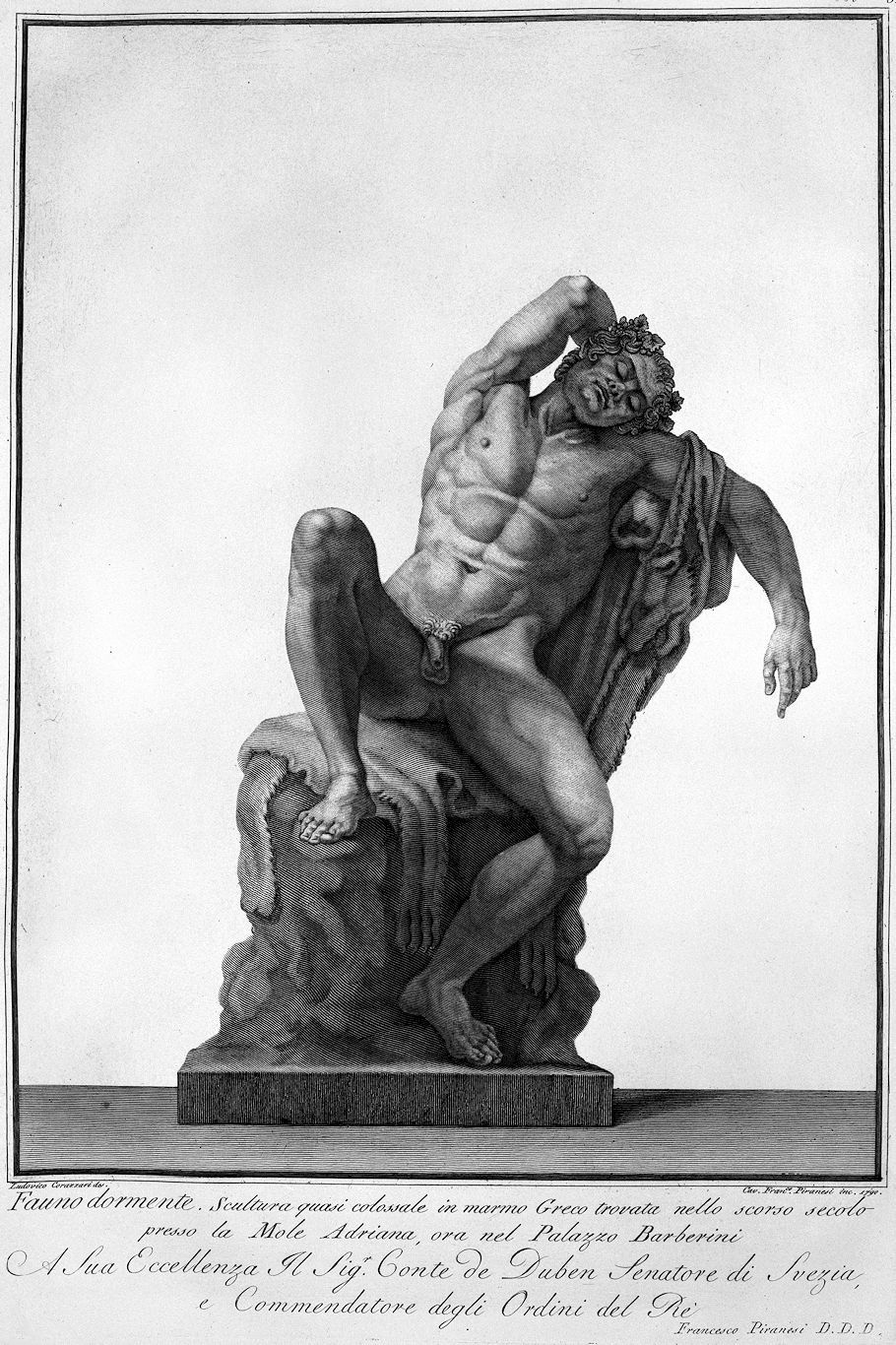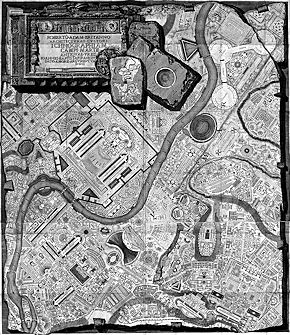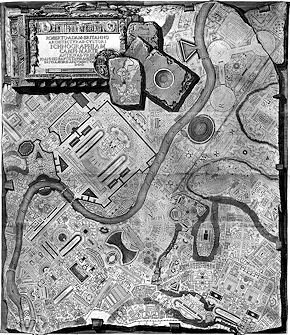17 May 1778 Sunday
Antiquities of Magna Graecia, now Kingdom of Naples: Pompeia, Theater of Herculaneum, paintings from Herculaneum and Stabia, Antiquities of Pstum,
Antiquities of Benevento, Capua and their surroundings, antiquities that can be found from the cave of Posilipus, along the coast, to Gaëta, Antiquities of Lazio, the famous Emissary of Emperor Claudius at Lake Fucino.
Antiquities of Rome: ancient Temples, ancient Theaters, ancient Amphitheatres and Naumachia, ancient Forums, ancient Arches, ancient Baths, Aqueducts, Fountains and Sewers, ancient Mausoleums, Curia, ancient Public Roads, Obelisks and Columns, ancient Circuses, Porticos, Tusculum, ancient and modern.
Antiquities of Preneste: Temple of Fortune Prenestine, Gabium antiquities on the Prenestine Way, antiquities of Tivoli, Villa Adriani, the famous Villa Estense, antiquities of Lazio, antiquities of Otricoli, antiquities of Cornette, Civita-Vecchia, and other cities on the Mediterranean Sea and the Adriatic.
31-32 y.o. Francesco Piranesi 1790
Collezione delle piu belle statue di Roma

Sleeping faun. Almost colossal sculpture in Greek marble found in the last century at the Mole Adriana, now in the Palazzo Barberini
To His Excellency The Count de Duben Senator of Sweden, and Commander of the King's Orders
Francesco Piranesi D. D. D.
Ludovico Corazzari drawn Francesco Piranesi engraved 1790.
17 May 1812 Sunday

Morning cloudy, temperature 48°, wind E fresh. Roads to Meeting wet, not deep. Afternoon heavy rain, attended in the evening with thunder and lightening. Temperature rose to 53°. Grain and grass have grown luxuriantly.
17 May 1999
correcting mistakes
The reality is that the Ichnographia is not an abundant breeding of "symbols devoid of significance," rather a cleverly delineated and labeled narrative of ancient Rome's own Imperial history. Both the many individual building plans and the Latin labels thereof act as a readable text which delivers an accurate historical (and at times even an accurate archeological) account.
It is not true that Piranesi outright rejects historical and archeological reality with regard to "reconstructing" ancient Rome's Campus Martius. In fact, most the buildings labeled within the Ichnographia not only represent buildings that once existed within ancient Rome, but they are for the most part positioned in their respective proper locations. This is not to say, however, that the entire map is "accurate." Many of the individual plans, although designating buildings that once existed, are nonetheless Piranesi's own design creations. As to those portions of the Ichnographia that are purely imaginative and/or inaccurate, it is within these that Piranesi is also the most astute, because it is Piranesi's superficial "mistakes" that signal precisely where to look for a deeper message or meaning regarding ancient Rome's (and particularly the Campus Martius') overall history.
It seems clear that it is precisely the "archeological mask" of the Campo Marzio that fooled Tafuri. Piranesi never intended the Ichnographia to be read as an archeological reconstruction, but as a wholly new reenactment of the Campus Martius. Piranesi's "experiment" is not in the design of the Campo Marzio per se, but in his Promethean delivery of historical (and architectural) narrative. As for the city delineated within the Ichnographia remaining an "unknown", this too is false because all one has to do is read (or translate) all the Latin labels within the Ichnographia to know the "city" it depicts.
After reading Piranesi's Campo Marzio properly, the notion of irrationality does not come into play. Piranesi's narrative method is indeed unprecedented, but his message does not carry an overt irrationally, nor even a covert irrationality. This latching on to the notion of irrationality within the Campo Marzio is perhaps Tafuri's most critical mistake because all subsequent reference (within Architecture and Utopia) to the presence of irrationality may be ostensibly based on a misguided and insubstantial premise. Unfortunately, it is Tafuri himself that "did not possess the means for translating the dynamic interrelationships" between plan forms and Latin labels which Piranesi used to "present" his historical narrative.
Interestingly enough, Piranesi did "equate" opposites, but not the opposites of rational and irrational. Piranesi looked to ancient Rome's own history and there recognized the opposites of Paganism and Christianity.
In composing the Campo Marzio, Piranesi did not utilize a "method of arbitrary association." What Piranesi did was to carefully link and sometimes even align seemingly individual buildings so that as a result certain groups of buildings generate distinct narratives or meanings. As one penetrates Piranesi's Campo Marzio, it becomes ever clearer that Piranesi rarely positioned building plans within the Ichnographia arbitrarily. As mentioned before, if the building plans do not represent actual structures that once existed in ancient Rome, then they are there performing some part of a specific narrative.
It is regrettable that Tafuri did not recognize the Campo Marzio's true "organic unity."
Through this quotation, Tafuri demonstrates his cursory observational procedure in examining the Campo Marzio. Although he correctly recognizes the axis running through the Bustum Hadriani, Tafuri does not note that this is the axis of death. Moreover, Tafuri does not detect the much longer axis of life that runs perpendicular to the axis of death. Additionally, the axes of the "Circus Agonnalis, of the Circus Flaminius, of the Templum Martis, of the Gimnasium Neronis, of the Terme [Baths] of Agrippa" do not even align let along act in concert with the axis of Hadrian's tomb. Tafuri should have known better than to even write that sentence, especially since he was carelessly copying the mistakes of Fasolo's 1956 text on the Campo Marzio.
As to the so-called "secondary alignment," Tafuri should have plainly cited this "rectilinear axis" as the Equiria, which Piranesi clearly labels as such. Without making the effort to investigate the Equiria, it is then no wonder that Tafuri found Piranesi's Campo Marzio a "formless tangle of spurious organisms."
Language is certainly present throughout Piranesi's Campo Marzio. First there is the presence of the Latin language with the close to one thousand Latin words that appear as labels throughout the Ichnographia. Second, there is the unique language (and syntax) of Piranesi's individual building plans, which quite often act as pictograms that in turn impart meaning. Taking the Latin labels and the language of the plans together, moreover, delivers the most complete rendition of Piranesi's message.
17 May 2007
"I see sham pane, but no glasses."
Miers and Sarah Fisher had fifteen children.
1776.10.21 birth of Thomas Fisher
1778.03.01 birth of Miers Fisher Jr. (1)
1778.08.01 death of Miers Fisher Jr. (1)
1779.10.26 birth of Esther Fisher
1780.07.08 death of Esther Fisher
1781.04.04 birth of Jabez Maud Fisher (1)
1782.08.18 birth of Redwood Fisher
1784.04.24 birth of Sarah Fisher and Miers Fisher (2)
1784.10.02 death of Sarah Fisher
1785.11.23 death of Miers Fisher (2)
1786.09.25 birth of Miers Fisher (3)
1788.02.09 birth of Lydia Fisher
1789.09.04 birth of Samuel Rowland Fisher
1791.02.10 birth of Sarah Rowland Fisher
1791.03.12 death of Sarah Rowland Fisher
1793.07.08 birth of Hannah Fisher
1793.09.24 death of Jabez Maud Fisher (1)
1794.10.12 birth of Octavius Fisher
1794.10.26 death of Octavius Fisher
1795.11.23 birth of Rebecca Fisher
1796.02.11 death of Rebecca Fisher
1798.08.19 death of Thomas Fisher
1801.04.30 birth of Jabez Maud Fisher (2)
1812.08.09 death of Samuel Rowland Fisher
1813.06.06 death of Miers Fisher (3)
1850.02.11 death of Lydia Fisher
1850.10.04 death of Hannah Fisher
1856.05.17 death of Redwood Fisher
1876.10.09 death of Jabez Maud Fisher (2)
=====
"Ramée lived in Philadelphia during most of his sojourn in America. He arrived there from Europe in the summer of 1812; after visiting David Parish's North-Country lands at the end of that year, he returned to Philadelphia and spent most of his time there [so perhaps Ramée did eventually visit Ury] until he sailed back to Europe in 1816.
"The careers of Latrobe and Ramée were parallel in certain ways. The two architects were the same age (both born in 1764) and both brought to America a knowledge of architectural design from several countries, as the young Latrobe had lived in Germany and England and had traveled elsewhere in Europe. Some of Latrobe's and Ramée's designs are remarkably similar, especially those relying on simple geometric forms and flat surfaces, broken only by arched recesses.
--Paul V. Turner, Joseph Ramée: International Architect of the Revolutionary Era, p. 217
17 May 2016
14 May
First state and second state of the Ichnographia Campus Martius side by side...
 
It remains a mystery as to why Piranesi changed all the circuses into an identical form, except the identical circus form is the only clue.
17 May 2023 Wednesday
. . . . . .
|